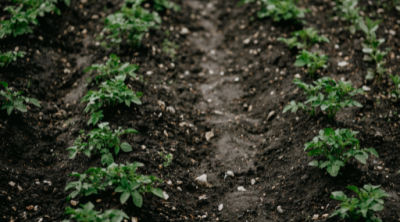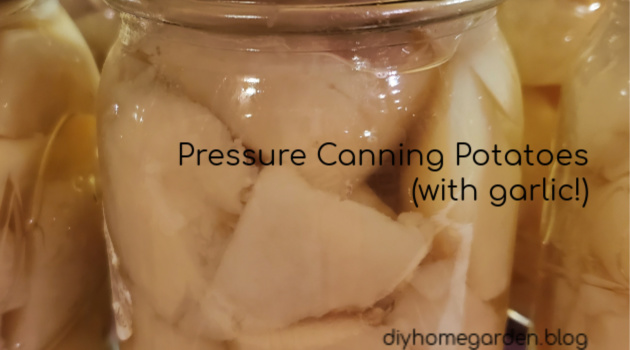When you think of gardening, what comes to mind? Perhaps growing flowers or planting a tree comes to mind. However, if you have never considered potatoes for your garden, perhaps it’s time that you do.
Potatoes are wonderful additions for those who enjoy gardening. They are simple to grow and provide a great deal of nutrition for your family. Not only that… If you love cooking potatoes in your meals, growing these plants can be an excellent way to save money. Finally, growing produce at home can also save you the hassle of running to the grocery store every time you run low on potatoes.
Types of Potatoes You Can Grow
Potatoes come in many different varieties. You can choose from white, red or yellow potatoes.
The variety you plant will depend on your taste preferences and the season in which you grow them.
Some of the most common types grown include:
#1 – Red Potatoes
Red potatoes contain significant amounts of vitamin C and other minerals.
These tubers also provide B-complex vitamins (e. g., folate) and loads of antioxidants.
#2 – Yukon Gold Potatoes
Yukon gold is among the most commonly available varieties in grocery stores.
They exhibit a rich, buttery flavor and are excellent for roasting or frying. In addition, these tubers provide significant amounts of vitamin C as well as iron.
#3 – Russet Potatoes
Russet potatoes are white and have a waxy texture.
They also provide significant amounts of vitamin C, iron, phosphorus, potassium, calcium, and protein (more than most other potato varieties).
#4 – Fingerling Potatoes
Fingerling potatoes are small with a round shape and have thin skin.
They are also loaded with vitamin C as well as magnesium, iron, phosphorus, and potassium.
#5 – New Potatoes
New potatoes are harvested before they mature completely. This makes them incredibly tender and flavorful.
These potatoes contain lots of nutrients, including B6 as well as folate and zinc.
Note: If you grow potatoes in your garden, you must know each variety’s growth patterns. For example, some varieties of potatoes (e.g., Yukon gold) need to be planted a little earlier than other varieties (e., g. Red).
 How to Sprout Potatoes From Eyes
How to Sprout Potatoes From Eyes
Most people start potato plants from seed. However, you can also sprout potatoes from the eyes.
This is the best choice for gardeners who want to continuously harvest new potatoes throughout the season.
To start your plants from potato eyes, you will need:
- A bag with a few inches of paper towels.
- Place three or four small potatoes inside the bag and put them in a warm area of your home, such as on top of the refrigerator.
- Set a reminder for four to six weeks and check it daily.
- You will know that the potatoes are ready when they are about five inches long with several leaves.
- At this point, you can plant them in the garden or in small pots.
How to Start Potatoes From Seeds
- If you do not have any potatoes to sprout, consider starting your plants from seeds.
- You may purchase potato seed packets at a garden center or online. However, note that there are very few “true” varieties of potatoes available through the seed catalogs.
- In general, this is because many of the potatoes are bred for specific traits such as disease resistance, size, and color rather than flavor and texture.
- Therefore, you may need to experiment with different varieties or choose a potato variety specifically suited for your state.
- It can be difficult to grow potatoes from seed outdoors in northern regions, primarily due to the short growing season.
Where is the Best Place to Plant Potatoes?
Potatoes can be grown in various places, including container gardens and raised beds, so long as the soil is well-drained and not very rocky or clay-like.
If you have sandy soil, this can be an excellent place to plant them because they will require consistent moisture but don’t need many nutrients.
Climate also plays a vital role in potato growth. Potatoes are more suited to growing in cooler climates owing to their high sensitivity to frostings and hot conditions. If you live in a warmer climate, it can be difficult to grow them because of the length of time for their roots to develop properly.
However, some cultivars can adapt to warm regions. They typically produce small tubers. You definitely, may want to try them if you live in a warmer climate.
If you are planting your potatoes in containers or raised beds, ensure that the location provides for full sun and has a consistent water supply throughout the growing season.
Regardless of placement, the soil should also be well-draining and rich in organic material.

Factors to Consider When Finding a Spot for Planting
In a nutshell, you want to consider the following when determining the best place to plant your potatoes:
- Fertility – Choose an area of high fertility and deep, loose soil.
- Soil pH – Potatoes like slightly alkaline soils with a pH range from 5.5 to 8.0
- Watering – Select a site that has good drainage but is watered consistently throughout the growing season.
- Exposure – Choose a site with full sun with minimal exposure to extreme temperatures above or below 60 degrees F.
- Containers– Excellent sites for growing potatoes include raised beds, containers, areas under tall trees and rows.
The Growing Process
Now that you have chosen a good place to grow your potatoes, we will look at how to plant them.
- When the seed potato plants are approximately five inches long and well-rooted, it is time to plant seeds in the garden.
- However, if you are growing them indoors as container plants, you may want to plant at least one month before you plan to transplant them into the garden.
- The best time to plant them is when they sprouted for at least three weeks and are approximately ten inches tall with a few leaves.
- Plant between four to six inches deep, about twelve to twenty inches apart depending on the variety of potato you are growing.
- It can take about four to six weeks for the plants to produce mature tubers.
- Be sure to keep the soil evenly moist; do not let it become too dry or too wet.
- If you notice that your plants are getting leggy, fertilize with a balanced fertilizer at about one-half of their original size.
- After three months, you should be able to see the new tubers beginning to appear.
- Be sure to harvest them when they have matured, which can take anywhere from three months to four or five months, depending on your climate and variety of potato.
Harvesting and Storage of Potatoes
- When you are ready to harvest your potatoes, dig them up carefully and place them in a cool, shaded area for two or three days.
- It is also recommended that they keep a cover over them for the first few days after being harvested so that they don’t get wet from excess rain or water.
- Wait until the skins toughen before storing them, which may take anywhere from two to three weeks, depending on how they are stored.
- To avoid getting cut, wash them at least one week after harvesting and dry them very well.
- Potatoes can be kept for up to four months in a cold storage area, approximately 40 degrees Fahrenheit with high humidity.
- If you have more potatoes than you can use, do not leave them out; it is best to harvest as soon as they are ready and place them directly into a cool storage area.
 Common Pests and Diseases
Common Pests and Diseases
Just like tomatoes, potatoes are also vulnerable to many diseases.
Watch out for wet leaves and fungus. If you notice any signs of a disease, remove the afflicted leaves and dispose of them. Destroy any diseased tubers, too.
One disease you want to keep an eye out for is “potato wart.” This yellowish growth on your potato leaves (or on the soil) is a pest that spreads by contact with other potatoes. You can control it by removing the affected foliage and with a spray of alcohol or soap.
Snails and slugs also munch on your taters. Traps are also a good option: you can pour some beer into glasses and then place them near the plants (or next to your pile of diseased potatoes). The bugs will be lured in and drown. You’ll have to do this after every rain – but that’s one of the easiest garden chores you’ve got.

The Bottom Line on Growing and Harvesting Potatoes
Growing your own potatoes is a fun and easy project. And this veggie is so very versatile, so it’s a family favorite for so many people! Give them a try. Please connect with us on Facebook–we’d love to know how it works for you.

